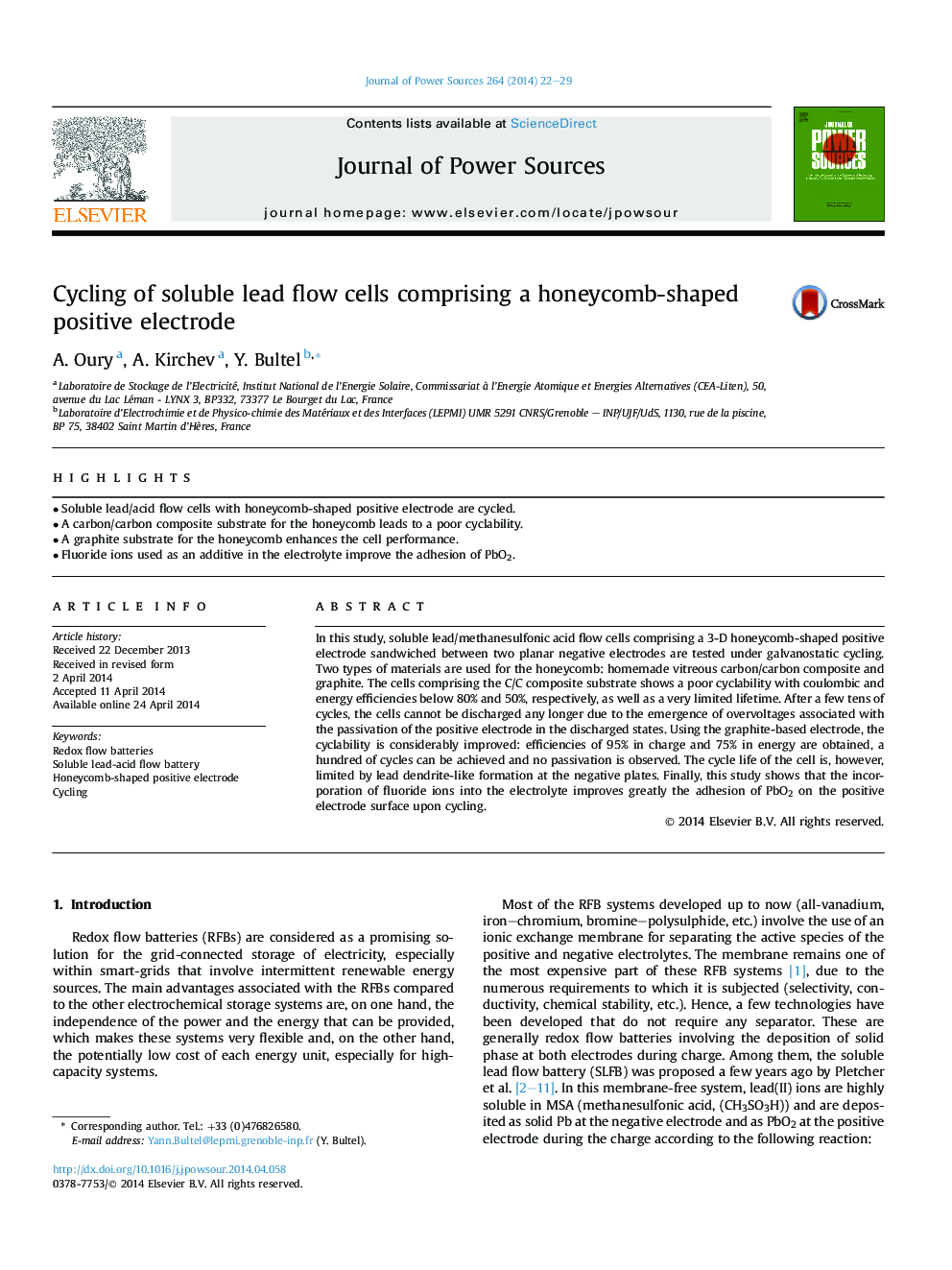| Article ID | Journal | Published Year | Pages | File Type |
|---|---|---|---|---|
| 1284112 | Journal of Power Sources | 2014 | 8 Pages |
•Soluble lead/acid flow cells with honeycomb-shaped positive electrode are cycled.•A carbon/carbon composite substrate for the honeycomb leads to a poor cyclability.•A graphite substrate for the honeycomb enhances the cell performance.•Fluoride ions used as an additive in the electrolyte improve the adhesion of PbO2.
In this study, soluble lead/methanesulfonic acid flow cells comprising a 3-D honeycomb-shaped positive electrode sandwiched between two planar negative electrodes are tested under galvanostatic cycling. Two types of materials are used for the honeycomb: homemade vitreous carbon/carbon composite and graphite. The cells comprising the C/C composite substrate shows a poor cyclability with coulombic and energy efficiencies below 80% and 50%, respectively, as well as a very limited lifetime. After a few tens of cycles, the cells cannot be discharged any longer due to the emergence of overvoltages associated with the passivation of the positive electrode in the discharged states. Using the graphite-based electrode, the cyclability is considerably improved: efficiencies of 95% in charge and 75% in energy are obtained, a hundred of cycles can be achieved and no passivation is observed. The cycle life of the cell is, however, limited by lead dendrite-like formation at the negative plates. Finally, this study shows that the incorporation of fluoride ions into the electrolyte improves greatly the adhesion of PbO2 on the positive electrode surface upon cycling.
